The Gripen was designed by Sweden for Sweden's Bas 90 air base system and - truly - Sweden built the perfect fighter for Sweden's Bas 90 system... which resulted in a fighter no one but Sweden needs.
Bear with me as I explain a few things @Saab doesn't want you to know.
1/29
Bear with me as I explain a few things @Saab doesn't want you to know.
1/29

Bas 90 was developed in the 1970s, when the Swedish Air Force was flying the Viggen (and some upgraded Draken). Bas 90 consisted of some 30+ reserve air bases with a 2,000+ metres (6,600+ ft) long main runway and 2-3 short runways of 800 metres (2,600 ft).
2/n
2/n

Here are the airbases of Kubbe (63°37'59.81"N 17°56'10.79"E) and Jokkmokk (66°29'48.43"N 20° 8'45.17") with the short runways highlighted in red.
Some of the short runways used public roads, but most were built specifically for the Bas 90 system in the 1980s.
3/n

Some of the short runways used public roads, but most were built specifically for the Bas 90 system in the 1980s.
3/n


These short runways (or Kortbanor) were only meant to be used as backup in case the main runway was damaged. And their use was limited to daytime and good weather operations. And they were too short to get a fully loaded and fuelled fighter in the air. And they were not road
4/n
4/n
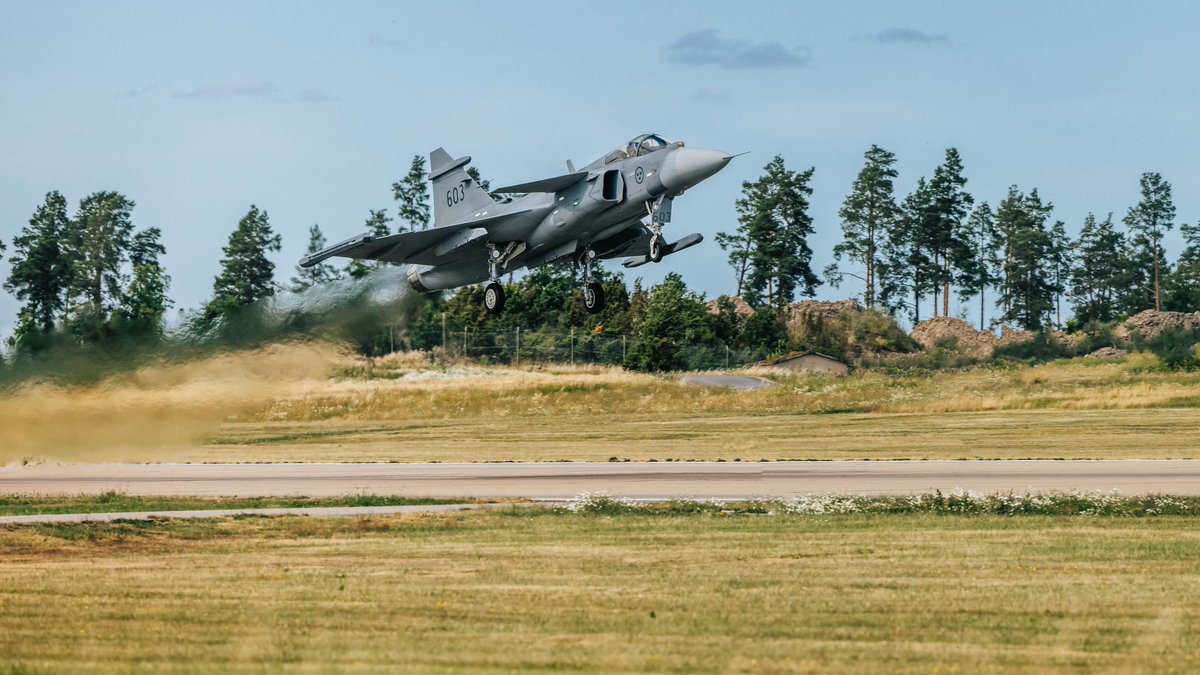
runways. Sweden's road runways were built as part of the earlier Bas 60 air base system and they were much longer (1,500–2,000 metres / 4,900–6,600 ft) and a bit narrower (12 metres / 39 ft) than the Kortbanor runways (Width: 17 metres / 56 ft). So when people say the Gripen
5/n
5/n
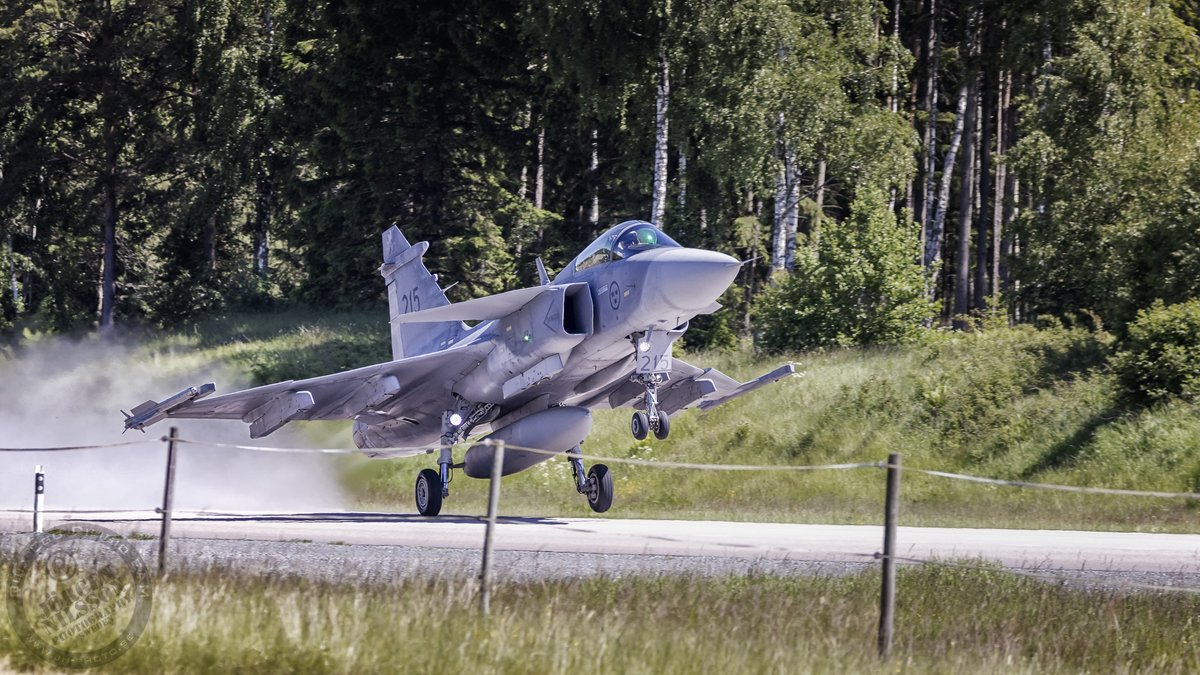
can take off from roads - that is true; and when they say the Gripen can take off from short runways - that is true too, but (!) the limitations are still that these operations are limited to daytime and good weather, and that on a short runway the Gripen is limited to
6/n
6/n
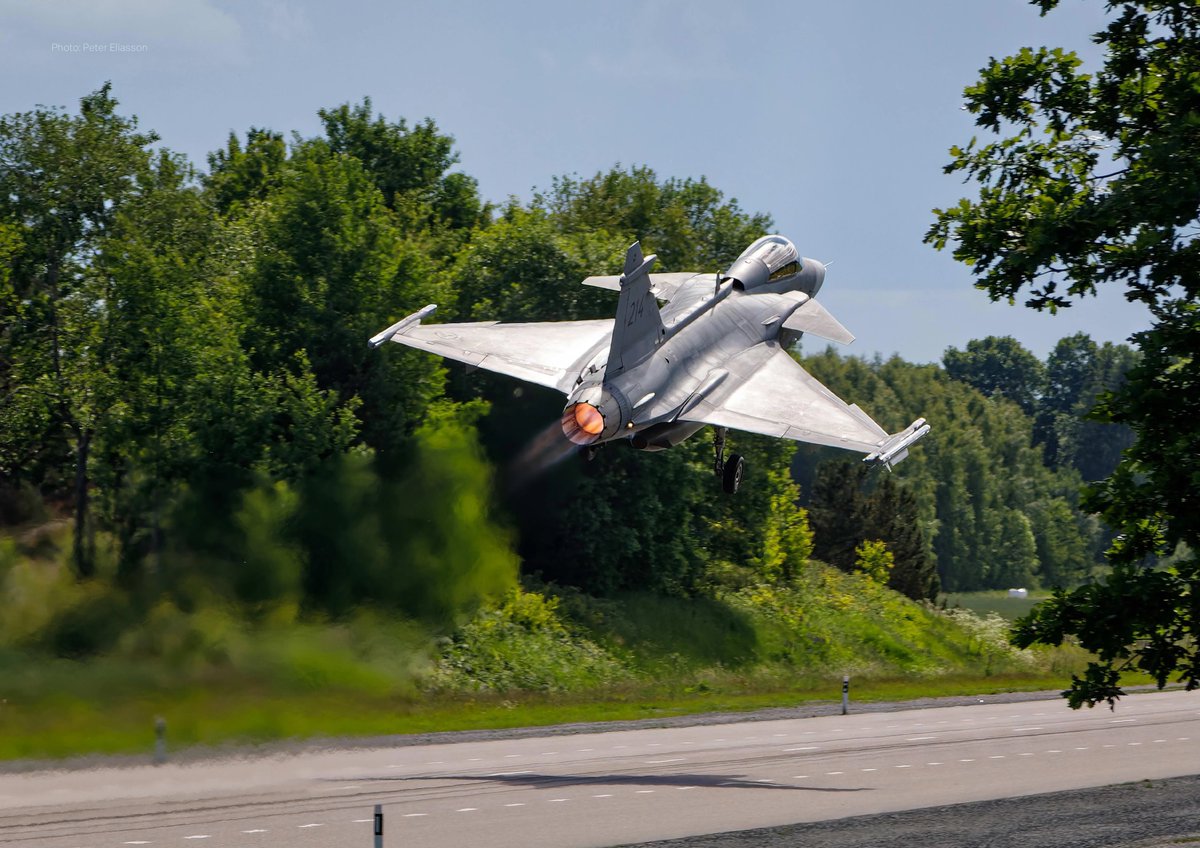
air-to-air loads only.
Not just the Gripen, but every Western fighter (F-15, F-16, F/A-18, F-22, F-35, Eurofighter, Rafale), was designed for short take offs and road runways. And all of them share the same limitations.
(Pic: a F/A-18 takes off from a road runway in Finland)
7/n
Not just the Gripen, but every Western fighter (F-15, F-16, F/A-18, F-22, F-35, Eurofighter, Rafale), was designed for short take offs and road runways. And all of them share the same limitations.
(Pic: a F/A-18 takes off from a road runway in Finland)
7/n

In short: if a Gripen can take off from a runway, then so can every other Western fighter with the same configuration.
In peacetime every Bas 90 was guarded by a dozen men. During wartime one of 33 Basbataljon 85 would have manned each base and this has led to Gripen fans
8/n
In peacetime every Bas 90 was guarded by a dozen men. During wartime one of 33 Basbataljon 85 would have manned each base and this has led to Gripen fans
8/n

constantly mention that "conscripts can rearm and refuel the Gripen in 10 minutes".
Cool, cool... I and any five of my followers can do that after 10 minutes of training too.
Let's look at refueling: one photo shows the refueling of an F-35B and the other of a Gripen C.
9/n

Cool, cool... I and any five of my followers can do that after 10 minutes of training too.
Let's look at refueling: one photo shows the refueling of an F-35B and the other of a Gripen C.
9/n

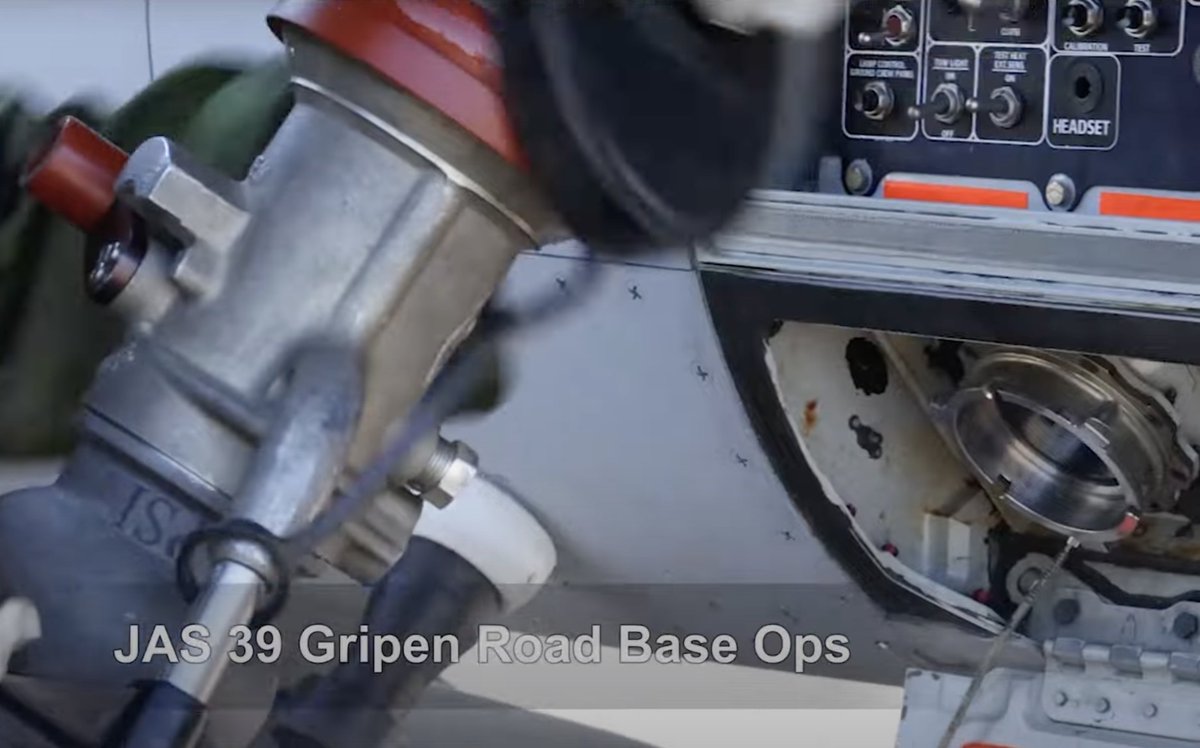
The nozzles are the same, so any fighter can be refueled at any NATO base... and every NATO conscript can do that in minutes.
Saab also likes to mention that you can "hot refuel" the Gripen, which means refuel while the engine runs... every Western fighter can do that.
10/n
Saab also likes to mention that you can "hot refuel" the Gripen, which means refuel while the engine runs... every Western fighter can do that.
10/n
Now when it comes to weapons, again - every NATO conscript can do it... because the Gripen uses almost only NATO missiles, bombs, pods etc.
Only 1 weapon system you attach to the Gripen is a pure Swedish design.
In short: if Swedish conscripts can refuel and rearm a Gripen
11/n
Only 1 weapon system you attach to the Gripen is a pure Swedish design.
In short: if Swedish conscripts can refuel and rearm a Gripen
11/n
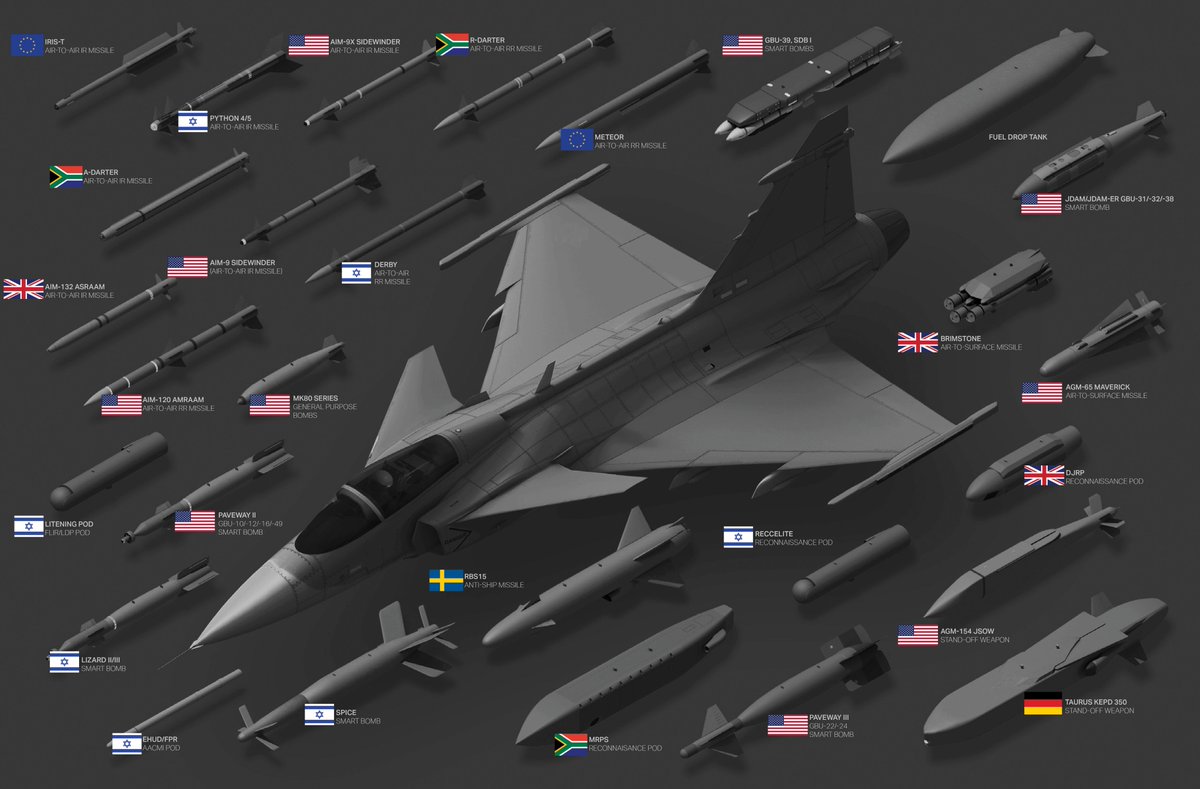
10 minutes, so can any other Western conscript crew with a fighter with the same weapons load.
The Gripen was designed in the 1980s for dispersed operations on the Bas 90 bases. And it excels at that... but every other Western fighter was designed with the same in mind.
12/n
The Gripen was designed in the 1980s for dispersed operations on the Bas 90 bases. And it excels at that... but every other Western fighter was designed with the same in mind.
12/n
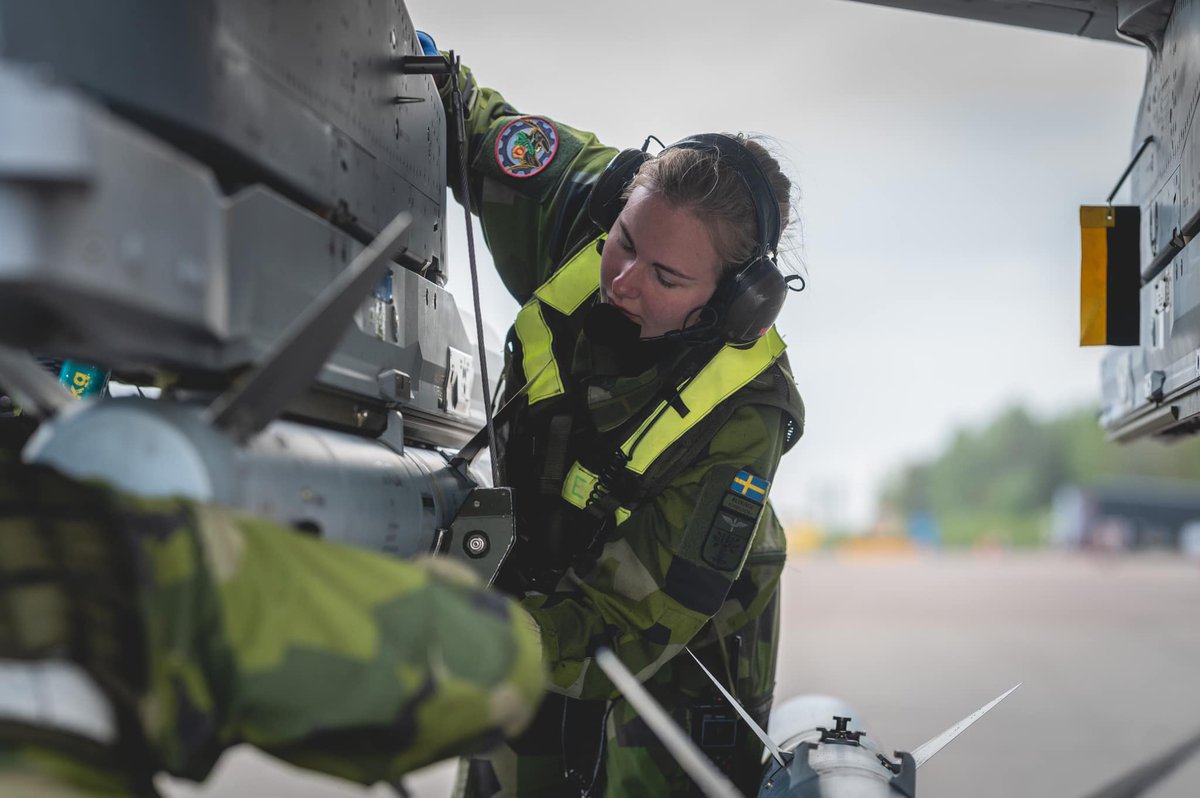
Gripen fans confuse all of these operational variants, short runways, road runways, dispersed operations, conscripts, etc. and believe it is unique to the Gripen... but Bas 90 bases are still air bases. A Basbataljon 85 consisted of 1,500 to 2,700 men, because
13/n
13/n
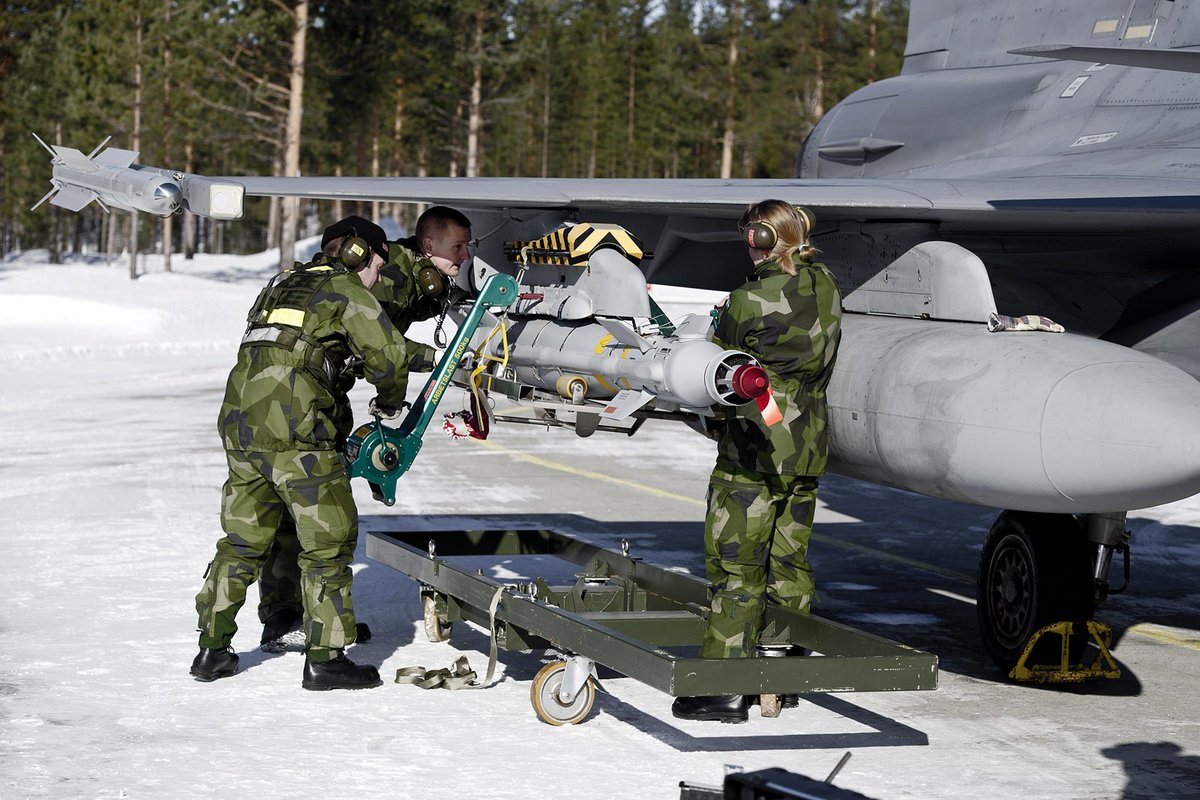
even though few troops are needed to mount weapons on a Gripen and refuel it, staff, logistics, meteorology, base defence, medics, quartermaster, air traffic control, fire fighting, engineers, etc. etc. require 100s of additional personnel.
Sure, you can deploy a Gripen with
14/n
Sure, you can deploy a Gripen with
14/n
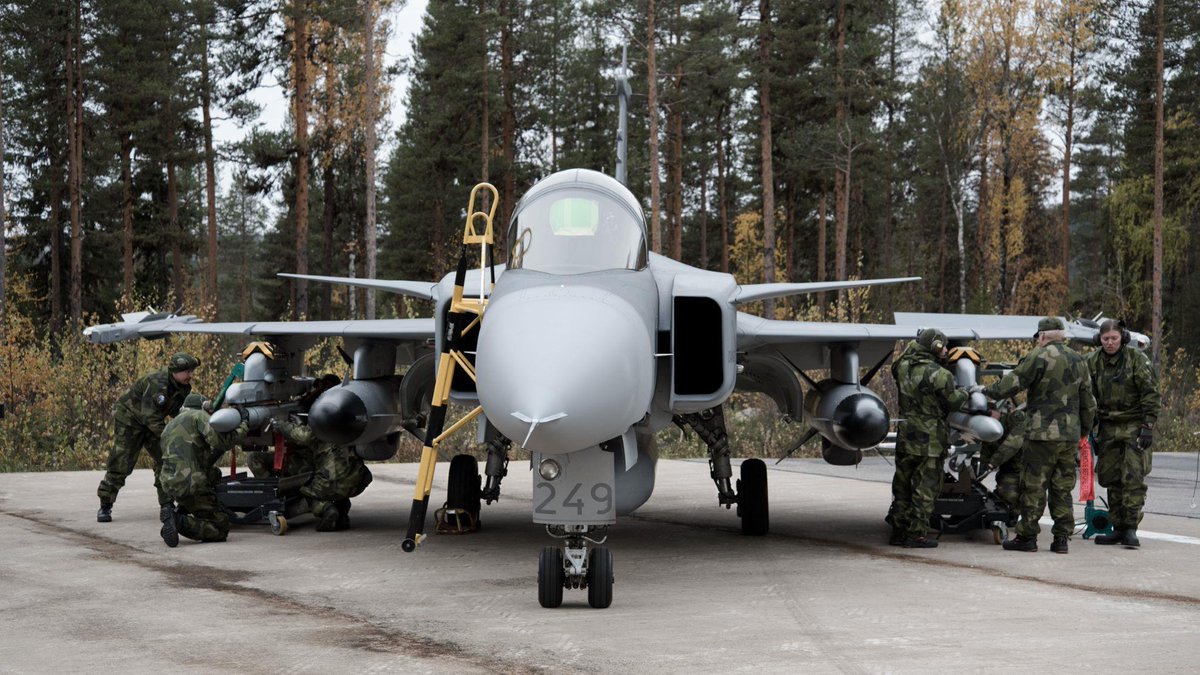
just a ground support element of 6 people... if you embed them in an allied base.
In short: The Gripen needs as many troops to operate as any other Western fighter. And the number of personnel tasked with rearming and refueling are for all fighters similar.
15/n
In short: The Gripen needs as many troops to operate as any other Western fighter. And the number of personnel tasked with rearming and refueling are for all fighters similar.
15/n

It just takes 12 (!) airmen to operate an F-35 contingency location, where two F-35 can be refueled and rearmed at the same time.
Also every Western fighter carries more ammo and fuel than a Gripen... and while the F-35A carries most fuel (18,250 lb), the F-15EX carries most
16/n
Also every Western fighter carries more ammo and fuel than a Gripen... and while the F-35A carries most fuel (18,250 lb), the F-15EX carries most
16/n
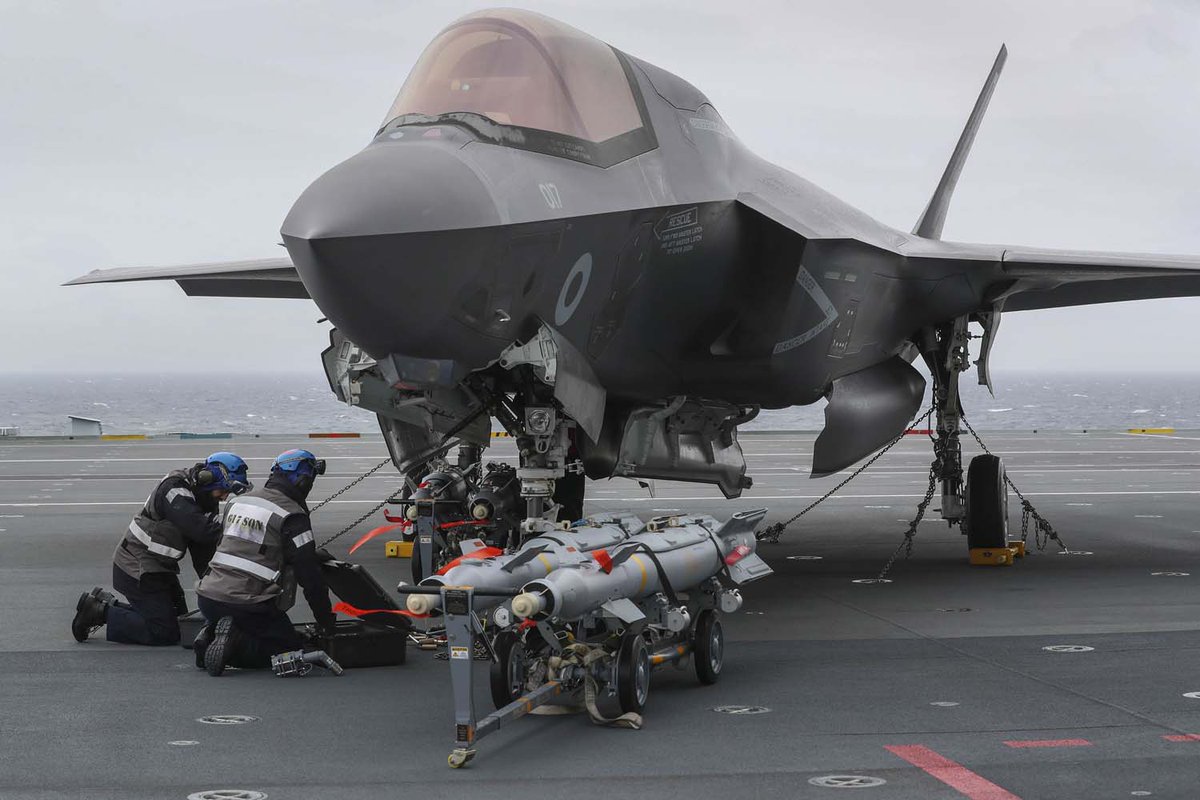
ammo (29,500 lb; to compare the B2 stealth bomber carries 40,000 lb).
I mention fuel and ammo, because the Gripen didn't need much of the former and few of the latter to excel at its original mission - to intercept Soviet fighters, bombers and ships over the Baltic Sea.
17/n
I mention fuel and ammo, because the Gripen didn't need much of the former and few of the latter to excel at its original mission - to intercept Soviet fighters, bombers and ships over the Baltic Sea.
17/n

In short: the Soviets were considered to be the only threat and to attack Sweden they had to cross the Baltic Sea or fight through Finland. Therefore scrambling fighter jets and intercept aerial threats respectively lob anti-ship missiles at Soviet amphibious landing ships
18/n
18/n
were key missions for the Swedish Air Force. Therefore the SH 37 Viggen maritime reconnaissance fighter and the AJ 37 Viggen strike fighter carried two RB 04 anti-ship missiles, while the JA 37 Viggen fighter carried two Skyflash air-to-air missiles... which would have been
19/n
19/n

lobbed at Soviet forces approaching Sweden.
This required the fighters to fly just a short distance out over the Baltic Sea: at maximum 300-400 km from the air bases furthest infland.
And when the Gripen was designed with a weaker engine than the Viggen (54 kN vs. 72 kN) the
20/n
This required the fighters to fly just a short distance out over the Baltic Sea: at maximum 300-400 km from the air bases furthest infland.
And when the Gripen was designed with a weaker engine than the Viggen (54 kN vs. 72 kN) the
20/n

Gripen's internal fuel tanks were designed 40% smaller than the Viggen's (5,000l vs. 3,000l).
Not a problem if you have to take off, fly 200km and then lob an AIM-120 AMRAAM air-to-air missile or a RBS-15 anti-ship missile at Soviet targets. But for most other air forces
21/n
Not a problem if you have to take off, fly 200km and then lob an AIM-120 AMRAAM air-to-air missile or a RBS-15 anti-ship missile at Soviet targets. But for most other air forces
21/n
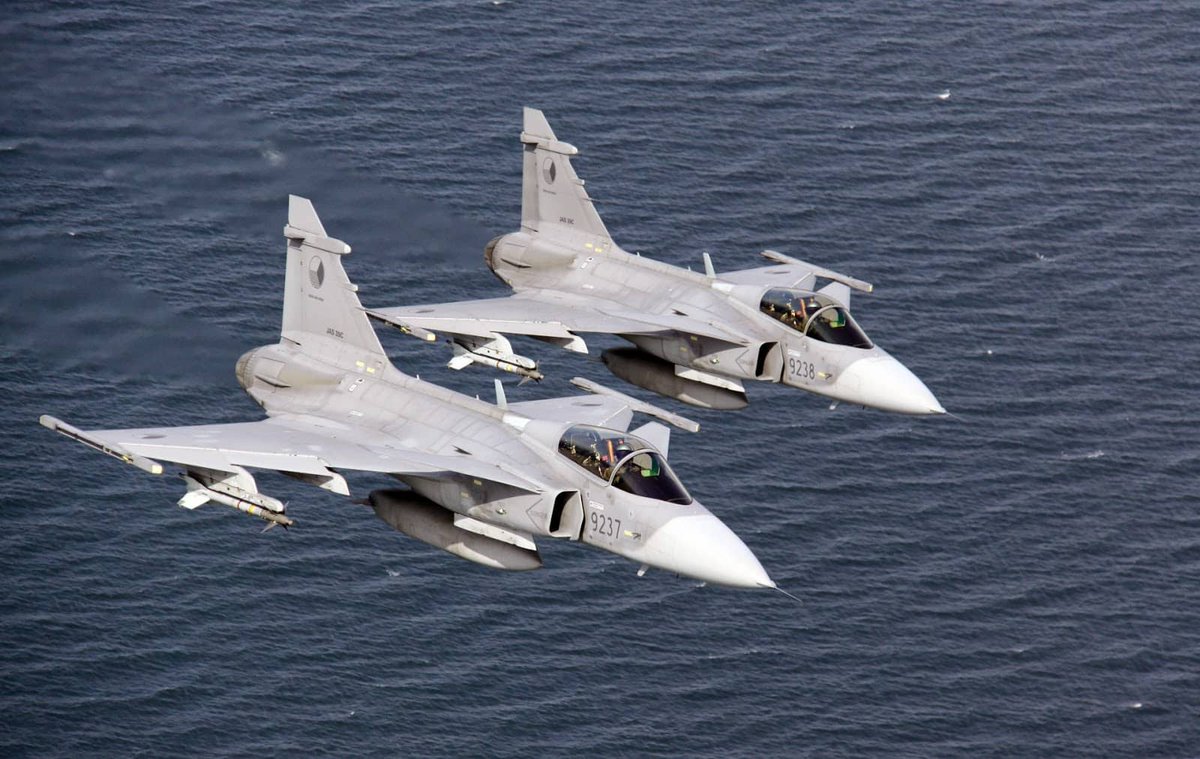
wholly inadequate. Sure you can mount external fuel tanks on the Gripen... which increases drag, reduces speed, increases fuel consumption, and blocks hardpoints, of which the Gripen has just 8.
A Rafale can mount three external fuel tanks and still have 11 hardpoints free.
22/n
A Rafale can mount three external fuel tanks and still have 11 hardpoints free.
22/n

(And a Rafale carries more than double the Gripen C's internal fuel).
The Gripen was designed to defend Sweden and for that mission it was always an excellent choice... but Sweden was a neutral country, where the enemy would most likely come from the sea... which makes the
23/n
The Gripen was designed to defend Sweden and for that mission it was always an excellent choice... but Sweden was a neutral country, where the enemy would most likely come from the sea... which makes the
23/n

Gripen C an ideal fighter for i.e. neutral Ireland, but not for Canada (due to its vast size), or the UK (due to the RAF having to patrol 1,000s of km into the North Atlantic and fly to attack russian forces in Eastern Europe.
The Gripen offers no advantage in operations or
24/n
The Gripen offers no advantage in operations or
24/n

maintenance, it carries less fuel and ammo than any other fighter, it has neither stealth nor supercruise (The Gripen NG test aircraft flew a few miles at supersonic speed after having switched off the afterburner - that's not supercruise that cheating) and, unlike the
25/n
25/n

Gripen C, which was cheaper than other Western fighters, the new Gripen E is more expensive.
The small production with just 10 aircraft per year is too small for economies of scale... to compare: Lockheed Martin produces more F-35 every 3 (!) weeks.
26/n
The small production with just 10 aircraft per year is too small for economies of scale... to compare: Lockheed Martin produces more F-35 every 3 (!) weeks.
26/n
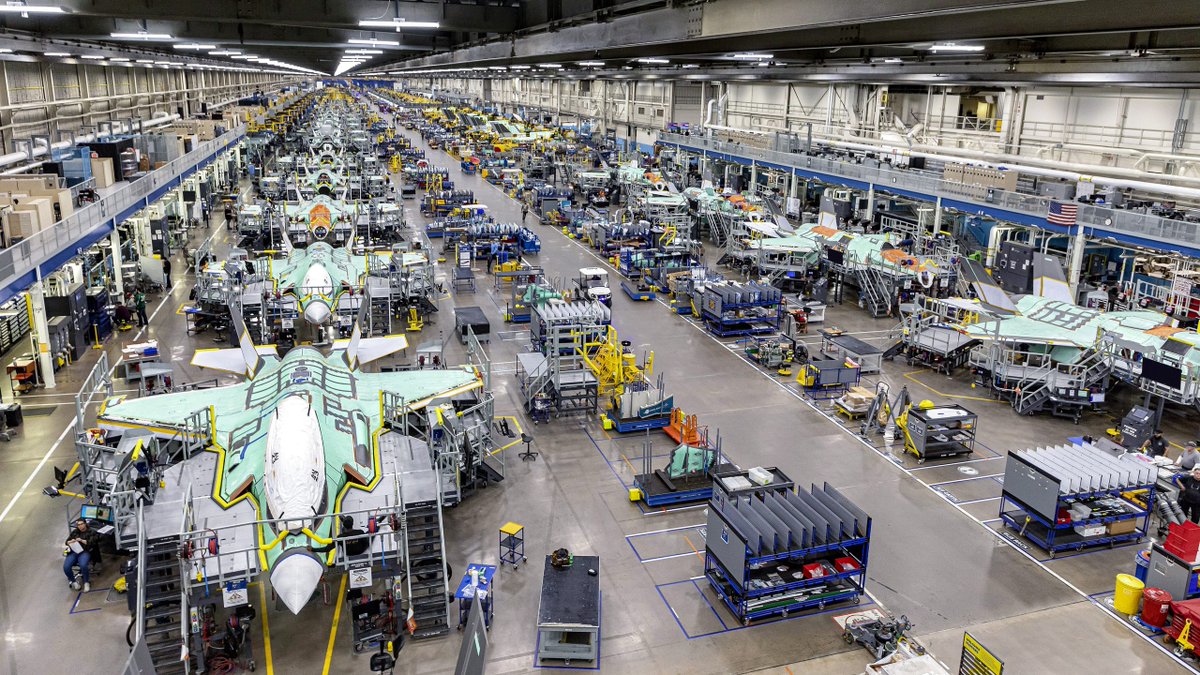
No Air Force in its right mind will buy a Gripen... especially no Air Force, which wants to buy a non-American design, because while the Gripen A/B's engine was a licensed produced GE F404 engine and the Gripen C/D's engine was Swedish built version of the GE F404, the
27/n
27/n
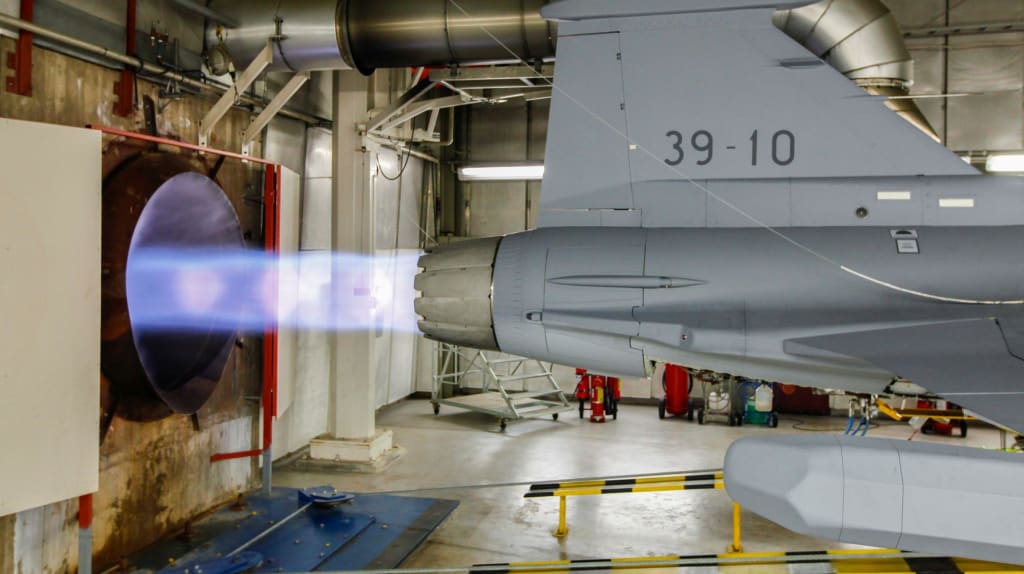
Gripen E/F engine is an American made GE F414-39E engine. Engine production in Trollhättan ceased in 2012 and GKN Aerospace in Trollhättan does only provide engine product support.
Summary: the Gripen was designed in the 1980s for the defence of Sweden and excelled at that.
28/n
Summary: the Gripen was designed in the 1980s for the defence of Sweden and excelled at that.
28/n

Nowadays every Western fighter in production outclasses the Gripen C and in most aspects also the Gripen E, which is also more expensive than the best Western fighter the F-35A.
And thus, if you want to buy a European fighter the only options are: Eurofighter and Rafale.
29/29
And thus, if you want to buy a European fighter the only options are: Eurofighter and Rafale.
29/29

• • •
Missing some Tweet in this thread? You can try to
force a refresh


















